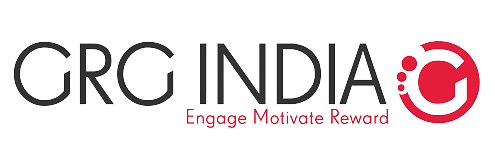8 Ways to Help Your Employees Achieve Work-Life Balance

8 Ways to Help Your Employees Achieve Work-Life Balance

We all strive to attain balance in whatever big or small we endeavor to do. When it comes to balancing our work and personal life, the fight gets even more intense. Employees who can achieve the right balance between work and personal life are usually more motivated in the office because it allows them to spend meaningful hours with their families and themselves. Employees who cannot manage their work-life balance tend to burn out faster, affecting their health and well-being.
In this tech-savvy age, it is not uncommon for employees to consider work-life balance important when considering a job. An American Time Use Survey in 2019 found that full-time employees worked about eight and a half hours on weekdays and about five and a half hours on weekends, including holidays. A Rescuetime Survey conducted amongst a target group of 850 and more knowledge workers revealed that 92% of them were working on weekends and evenings, much before Covid-19.
Interestingly ever since the pandemic struck and employees were confined to working from home, the workday span seems to have increased in most countries. Australia recorded a 45% increase in workday span, while India recorded the longest workday span. (Microsoft’s Work Trend Index Report 2021). In the same report, it has been pointed out that at least one out of every five employees feels that their employer is not concerned about their work-life balance.
A peek into the history of work-life balance
Coincidentally, the concept of work-life balance has been around for decades, officially first coined in 1986. But, man has been trying to achieve this balance at his workplace for centuries. Robert Owen was the first person to introduce the term, back in 1817– as per him; a day should be ideally divided into three parts of eight hours each – first part for work, second for recreation, and third hour for rest.
Of course, the concept did evolve through the past two hundred years or more. Today, work-life balance is not about equally segregating twenty-four hours in a day; it is more about priorities and choices.
Since work-life balance is individualistic, employers could and mostly have dissociated themselves from the concept. After all, achieving work-life balance is good for the individual employee; how can it affect the organizational workflow? Contrary to what many business owners, CEOs, CXOs, and HR managers view work-life balance, this is one aspect that affects employees’ personal and the professional life of employees. And, anything that affects the life of employees should be of interest to employers because it impacts employee productivity levels.
Why are we talking of work-life balance here? Because ever since the pandemic has broken out, a great deal of discussion has been happening around the well-being of employees. The awareness levels about wellness, work-life balance and employee well-being amongst employees and employers are at one of the highest at the moment. Work from home acted as a catalyst for many employees who felt that finally, they could prioritize between work and home and create a balance between the two. While earlier the same employee would mind sitting late in the office and finishing off work, today, the person doesn’t mind completing pending tasks after office hours because they could happily dedicate some time towards their personal obligations during the conventional work timing. It is time to transition from being only a customer-friendly workplace to an employee-friendly organization!
Ways to make Work-life Balance a reality in your workplace
If your HR department is busy working out the right policies to ensure that the culture of a balanced work-life thrives for promoting teamwork, morale and productivity, here are some excellent ways to do so:
- Adopt flexibility
Microsoft’s Work Trend Index Report 2021 reports that more than 70% of employees prefer working remotely and flexibly. It further mentions that about 66% of decision-makers are now weighing options of hybrid work environments and even redesigning the physical space. As Satya Nadella, the CEO at Microsoft, says, organizations need to match stride with changing employee expectations and exercise flexibility in working out where, how, and when people work.
Consider these options when deciding to offer improved flexibility at work:
- Flexi-time – let employees choose their hours of work rather than sticking to the 9 to 5 schedule. It gives them time to cater to their social and personal life.
- Friendly leave policies for employees – employers need to encourage employees to mandatorily take paid vacations and time off from work that leaves them rejuvenated and relaxed. Similarly, introducing paternity leave al maternity leave is also the right move.
- Workation – this is a concept that is gaining ground fast. Employees have the choice to work and play simultaneously, boosting their morale levels.
- Work from home options – it helps employees save time spent commuting or cooking homemade meals rather than ordering food from outside.
- Encourage a healthy work environment
Do anything that is feasibly possible in the creation of healthy working space. It could be a remote workspace or in the office. Continue sponsoring gym memberships to offering healthy food in the office canteen, organizing yoga and meditation classes – some employers are re-aligning physical office space to create designated quiet corners where employees can sit, relax, reflect, meditate, and so on.
- Empower your managers to lead with example
While this one may sound clichéd, the truth is that your employees will be encouraged and confident of adopting a healthy work-life balance when it comes from the top. If the CEO, senior executives, and managers have an exemplary work-life balance, they are sure to inspire others around too. Additionally, ensure that your managers are empowered enough to keep a watch on issues like overwork, burnout, and workers struggling to manage their work-life.
- Give volunteering time off
The concept of volunteering is fast catching up with corporate culture. It is a way to give back to society and strengthen your corporate social responsibilities. It is also an optimized way to get your employees to lend their hand and knowledge to social causes. Volunteering helps employees de-stress, also helping earn goodwill within the organization.
- Follow a ‘no work at home’ policy after office hours, holidays and weekends
A strict ‘no work from home’ policy can be implemented for offices transitioning to full-time physical workplaces. Recently, there was news coverage about Portugal banning bosses from sending text messages to their staff after work hours.
- Encourage employees to take up and spend time on their hobbies
Employers can encourage employees to take up hobbies and do things they like. It gives them the time to do something to suit their aspirations. At a personal level, your employees love to do certain things like painting, dancing, singing, etc. By encouraging them to do so, you can meet their needs for a good life.
- Provide child care facilities
Parents of young children get stuck in the dilemma of leaving kids at home to attend to their professional commitments. It often gives rise to behaviors that get termed as unprofessional, forcing the employees to forsake their career progression many a time.
Being sensitive to the needs of such employees and arranging for child care facilities can be a big help. Responsive employers are the new normal, and you should be looking at ways to communicate the same to your workers.
- Make team-building endeavors a compulsory part of your workplace culture
Team building exercises help improve interpersonal skills amongst employees, especially with remote teams impacting work-life balance indirectly. Team building endeavors effectually lead to building a friendly workplace environment marked by comradeship and team spirit. In such an environment, office work is no longer about coming to the office, completing the chores for the day, and going back home. There is more involvement, less work-related stress, and overall a feeling that there is someone on whom the employee can depend for support and help if need be. This, in turn, affects the employee’s well-being, improving his work-life balance.
Work-life balance is important, not just for individual employees but also for the organization. A study by UCL says that overtime is not good for the heart. Human beings have specific endurance levels. The constant pressure can be harmful to the mental and physical health of a person. It is time that employers take cognizance of this fact and introduce healthy work-life balance initiatives so that employees’ health issues take a back seat. Plus, a healthy work-life balance means relaxed employees who can focus better on their work and achieve higher productivity levels.
Employers around the world are looking at newer and better ways to drive employee engagement at the workplace. Improving work-life balance is definitely one of the ways, but it cannot deliver the desired results in a vacuum or solo. It needs to be intertwined well with innovative programs like employee rewards and recognition, encouraging personal development, promoting learning opportunities, etc.
We all strive to attain balance in whatever big or small we endeavor to do. When it comes to balancing our work and personal life, the fight gets even more intense. Employees who can achieve the right balance between work and personal life are usually more motivated in the office because it allows them to spend meaningful hours with their families and themselves. Employees who cannot manage their work-life balance tend to burn out faster, affecting their health and well-being.
In this tech-savvy age, it is not uncommon for employees to consider work-life balance important when considering a job. An American Time Use Survey in 2019 found that full-time employees worked about eight and a half hours on weekdays and about five and a half hours on weekends, including holidays. A Rescuetime Survey conducted amongst a target group of 850 and more knowledge workers revealed that 92% of them were working on weekends and evenings, much before Covid-19.
Interestingly ever since the pandemic struck and employees were confined to working from home, the workday span seems to have increased in most countries. Australia recorded a 45% increase in workday span, while India recorded the longest workday span. (Microsoft’s Work Trend Index Report 2021). In the same report, it has been pointed out that at least one out of every five employees feels that their employer is not concerned about their work-life balance.
A peek into the history of work-life balance
Coincidentally, the concept of work-life balance has been around for decades, officially first coined in 1986. But, man has been trying to achieve this balance at his workplace for centuries. Robert Owen was the first person to introduce the term, back in 1817– as per him; a day should be ideally divided into three parts of eight hours each – first part for work, second for recreation, and third hour for rest.
Of course, the concept did evolve through the past two hundred years or more. Today, work-life balance is not about equally segregating twenty-four hours in a day; it is more about priorities and choices.
Since work-life balance is individualistic, employers could and mostly have dissociated themselves from the concept. After all, achieving work-life balance is good for the individual employee; how can it affect the organizational workflow? Contrary to what many business owners, CEOs, CXOs, and HR managers view work-life balance, this is one aspect that affects employees’ personal and the professional life of employees. And, anything that affects the life of employees should be of interest to employers because it impacts employee productivity levels.
Why are we talking of work-life balance here? Because ever since the pandemic has broken out, a great deal of discussion has been happening around the well-being of employees. The awareness levels about wellness, work-life balance and employee well-being amongst employees and employers are at one of the highest at the moment. Work from home acted as a catalyst for many employees who felt that finally, they could prioritize between work and home and create a balance between the two. While earlier the same employee would mind sitting late in the office and finishing off work, today, the person doesn’t mind completing pending tasks after office hours because they could happily dedicate some time towards their personal obligations during the conventional work timing. It is time to transition from being only a customer-friendly workplace to an employee-friendly organization!
Ways to make Work-life Balance a reality in your workplace
If your HR department is busy working out the right policies to ensure that the culture of a balanced work-life thrives for promoting teamwork, morale and productivity, here are some excellent ways to do so:
- Adopt flexibility
Microsoft’s Work Trend Index Report 2021 reports that more than 70% of employees prefer working remotely and flexibly. It further mentions that about 66% of decision-makers are now weighing options of hybrid work environments and even redesigning the physical space. As Satya Nadella, the CEO at Microsoft, says, organizations need to match stride with changing employee expectations and exercise flexibility in working out where, how, and when people work.
Consider these options when deciding to offer improved flexibility at work:
- Flexi-time – let employees choose their hours of work rather than sticking to the 9 to 5 schedule. It gives them time to cater to their social and personal life.
- Friendly leave policies for employees – employers need to encourage employees to mandatorily take paid vacations and time off from work that leaves them rejuvenated and relaxed. Similarly, introducing paternity leave al maternity leave is also the right move.
- Workation – this is a concept that is gaining ground fast. Employees have the choice to work and play simultaneously, boosting their morale levels.
- Work from home options – it helps employees save time spent commuting or cooking homemade meals rather than ordering food from outside.
- Encourage a healthy work environment
Do anything that is feasibly possible in the creation of healthy working space. It could be a remote workspace or in the office. Continue sponsoring gym memberships to offering healthy food in the office canteen, organizing yoga and meditation classes – some employers are re-aligning physical office space to create designated quiet corners where employees can sit, relax, reflect, meditate, and so on.
- Empower your managers to lead with example
While this one may sound clichéd, the truth is that your employees will be encouraged and confident of adopting a healthy work-life balance when it comes from the top. If the CEO, senior executives, and managers have an exemplary work-life balance, they are sure to inspire others around too. Additionally, ensure that your managers are empowered enough to keep a watch on issues like overwork, burnout, and workers struggling to manage their work-life.
- Give volunteering time off
The concept of volunteering is fast catching up with corporate culture. It is a way to give back to society and strengthen your corporate social responsibilities. It is also an optimized way to get your employees to lend their hand and knowledge to social causes. Volunteering helps employees de-stress, also helping earn goodwill within the organization.
- Follow a ‘no work at home’ policy after office hours, holidays and weekends
A strict ‘no work from home’ policy can be implemented for offices transitioning to full-time physical workplaces. Recently, there was news coverage about Portugal banning bosses from sending text messages to their staff after work hours.
- Encourage employees to take up and spend time on their hobbies
Employers can encourage employees to take up hobbies and do things they like. It gives them the time to do something to suit their aspirations. At a personal level, your employees love to do certain things like painting, dancing, singing, etc. By encouraging them to do so, you can meet their needs for a good life.
- Provide child care facilities
Parents of young children get stuck in the dilemma of leaving kids at home to attend to their professional commitments. It often gives rise to behaviors that get termed as unprofessional, forcing the employees to forsake their career progression many a time.
Being sensitive to the needs of such employees and arranging for child care facilities can be a big help. Responsive employers are the new normal, and you should be looking at ways to communicate the same to your workers.
- Make team-building endeavors a compulsory part of your workplace culture
Team building exercises help improve interpersonal skills amongst employees, especially with remote teams impacting work-life balance indirectly. Team building endeavors effectually lead to building a friendly workplace environment marked by comradeship and team spirit. In such an environment, office work is no longer about coming to the office, completing the chores for the day, and going back home. There is more involvement, less work-related stress, and overall a feeling that there is someone on whom the employee can depend for support and help if need be. This, in turn, affects the employee’s well-being, improving his work-life balance.
Work-life balance is important, not just for individual employees but also for the organization. A study by UCL says that overtime is not good for the heart. Human beings have specific endurance levels. The constant pressure can be harmful to the mental and physical health of a person. It is time that employers take cognizance of this fact and introduce healthy work-life balance initiatives so that employees’ health issues take a back seat. Plus, a healthy work-life balance means relaxed employees who can focus better on their work and achieve higher productivity levels.
Employers around the world are looking at newer and better ways to drive employee engagement at the workplace. Improving work-life balance is definitely one of the ways, but it cannot deliver the desired results in a vacuum or solo. It needs to be intertwined well with innovative programs like employee rewards and recognition, encouraging personal development, promoting learning opportunities, etc.






















